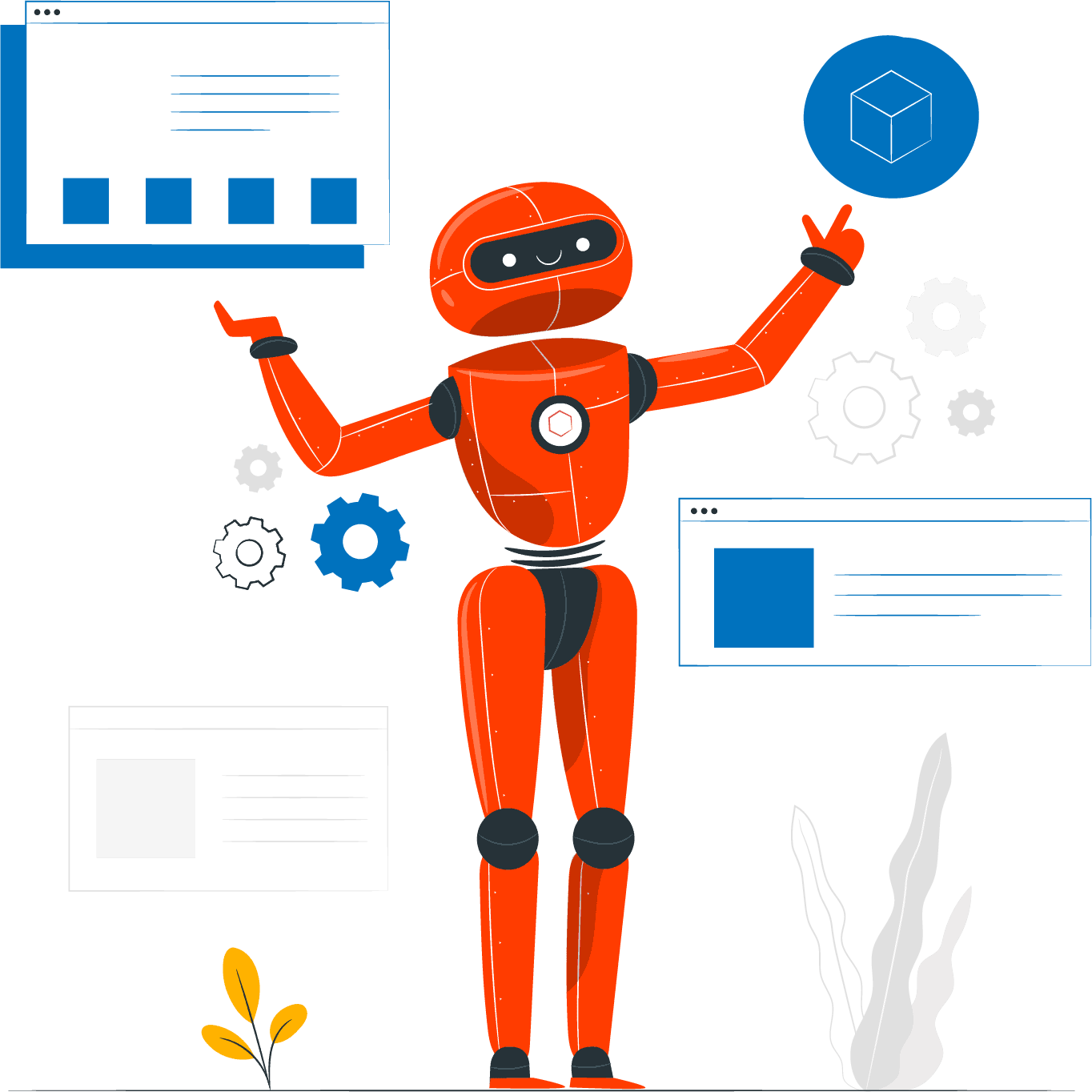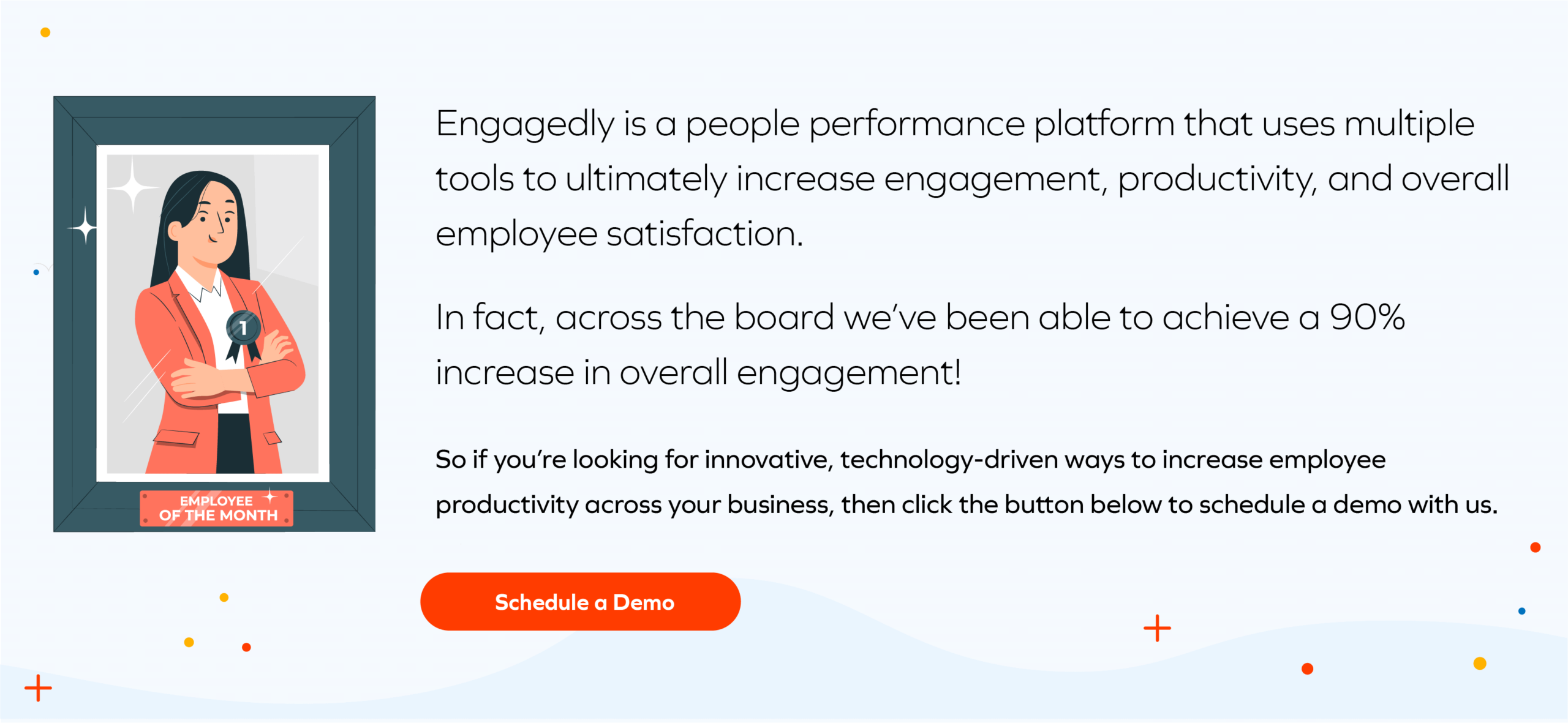When it comes to productivity levels, most people have their ups and downs. And that’s completely normal. Especially when we take into account the fact that productivity is hugely impacted by a variety of factors like internal motivation and digital adoption.
However, it is also true that organizational success hugely depends on employee efficiency and engagement.
Survey data shows that the annual cost of low productivity adds up to a whopping $1.8 trillion a year. Knowing this, it quickly becomes evident that boosting performance is a must for any company looking to thrive.
Are you a small business owner or manager looking to support your team and help them do better work? This article looks at some of the biggest productivity studies and surveys, giving you data-based takeaways to build effective strategies for increasing output quantity and quality.
Employee Well-Being = Thriving Company Performance
One of the most important things you must understand about improving productivity levels is that it’s directly related to your employees’ well-being.
In fact, a survey from the Great Place To Work® Institute revealed that organizations whose employees are happy tend to perform more than three times better than their competitors.
But even if your goals don’t include tripling your revenue or stock market value, investing in employee experience genuinely pays off.
According to Gallup, people who are thriving outperform colleagues who are struggling or suffering. In fact, when your workers are miserable (even when they display high engagement rates at work), it is significantly more likely that your team will experience burnout. They’ll inevitably worry, stress, and report feelings of sadness and anger.
Of course, managers and business owners can’t (and shouldn’t) attempt to fix their employees’ personal lives. However, according to the biggest productivity studies, there is a lot that leaders can do to support workers to improve their well-being and boost their efficacy.
Also read: The Complete Guide To Employee Health And Wellbeing Strategy
Physical and Mental Health Must Come First
According to a 2019 scientific report, meaningful increases in employee well-being yield, on average, a 10% productivity increase. So, to boost employee productivity, pay attention to your team’s health and happiness.
- Productivity studies show that people who get 5 to 6 hours of sleep achieve 19% lower productivity levels than those who get the recommended 7 to 8 hours per night.
- Nutrition can also be impactful. The consensus is that both blood sugar and micronutrient levels affect efficiency, showing just how important it is for your team to take breakfast and lunch seriously and choose whole, micronutrient-rich foods instead of eating takeout at their desk.
- In a recent study, HBR revealed that physical activity leads to better sleep quality, higher energy levels, and improved task focus. And seeing how these factors significantly impact job performance and creativity, it’s easy to see there’s a link.
- Mental health also has tremendous implications for organizational productivity. A 2022 critical review of available literature found clear evidence that poor mental health (manifested as depression or anxiety) is directly correlated with lost productivity.
There are many different ways of helping your team achieve maximum health. You could focus on providing healthy office snacks. Or you could organize team-building activities that promote movement — paddleboarding is a great workout, for example. And the best thing is that by doing any of these things, you can influence your workforce to take better care of themselves without making it feel like a chore.
Also read: Wellbeing At Work – The Remote Edition [Infographic]
Flexibility Is the Name of the Game
The State of Remote Work 2022 report from OwlLabs is one of the more recent productivity studies revealing that flexibility is one of the key contributors to better work performance.
According to the research, 62% of people feel more productive when working from home. The location allows them to:
- focus better
- be more creative
- perform tasks independently and without distractions
- meet their deadlines
- achieve personal and professional growth
But flexibility is not just about staying home and doing loads of laundry between Zoom meetings.
An increasing number of young professionals are interested in exploring new flexible work modes. For instance, a recent survey discovered that 53% of Americans would be interested in taking a workcation — that is, to work from a holiday location.
The great news is that this is a relatively easy concession to make. Primarily, this is thanks to the wide availability of both hybrid business tools. Plus, international travel doesn’t have to be painfully expensive anymore either — you can now use tools like Google Flights to find cheap tickets.
So, if you can support your employees in making their dream of living in Italy for a summer come true, why not do it? After all, data from the biggest productivity studies shows that happy people make for productive employees. So that’s a win-win.
Experiments Show That Less May Be More
Finally, when it comes to helping employees thrive, it’s essential to remember that working a lot doesn’t necessarily equal getting a lot done.
In fact, the 2023 report from 4 Day Week Global revealed that out of the 2,900 UK workers surveyed:
- 39% felt less stressed.
- 71% had reduced levels of burnout.
- 54% saw improvements in their work-life balance.
- Company revenue rose, on average, by 1.4%.
These findings show that policies such as mandatory PTO or even just encouraging your team to use their vacation time can positively affect performance.
In a recent article, HBR pointed out that just ten extra hours of time off improved employee year-end performance by 8%. Moreover, workers who used all their vacation time were more likely to get a promotion and less likely to quit their jobs.
Also read: Employee Happiness: 12 Ways To Keep Employees Happy
Embracing Technology Is More Than Just Being Trendy
In a world where new software solutions pop up daily, the idea of using technology to boost productivity may seem gimmicky. Because, yes, a new tool could improve a team’s output by 10% or 15%. But when there’s a steep learning curve involved, it can seem like the gains are not worth the effort.
Nonetheless, if you look at one of the biggest studies about tech and AI, you’ll find that these tools hold a lot of potential for improving productivity.
In fact, the Opportunities of Artificial Intelligence report published in 2020 found that one of the primary anticipated impacts of AI would be a 37% increase in labor productivity by 2035. Moreover, the implementation of AI and ML in organizations would drive innovation and growth. And contrary to naysayers’ beliefs, it would also create new jobs (instead of robots taking them over from humans).
So, what does this mean for leaders trying to support their employees in boosting productivity levels? The main takeaway is that future-oriented organizations must make it their mission to discover and use helpful tools to support their (human) workers in achieving exceptional results.
And the great thing is that there are numerous small and easy-to-implement ways to employ tech to drive productivity. From consulting interactive informational resources like the stocks chart from MarketBeat to signing up for services like Setapp, teams can make impressive wins. But only as long as they are prepared to adopt new tech in their pursuit of improving work outcomes and companywide performance.
Workplace Design Matters
Finally, when it comes to some of the most important takeaways from the biggest productivity studies, it’s important to mention that science has shown that work environments directly influence productivity levels.
In other words, the thousands of YouTube videos showing influencers sharing their work desk setups aren’t just a passing trend. Rather, they reflect the scientific fact that well-designed environments support good work.
- For instance, setting the office thermostat to the right temperature could be the key to boosting productivity and minimizing errors. In fact, some productivity studies found that the ideal work conditions are in temperatures ranging from 68 to 86 degrees, with humidity levels between 20% and 60%.
- Similarly impressive is the fact that air quality affects employees’ cognitive capacities. Poor ventilation and high levels of PM2.5 pollution slowed response times for workers and reduced their accuracy.
- Improving environmental lighting quality is also an effective way to affect employees’ efficiency and well-being, according to a 2019 analysis.
- And, of course, it’s also worth mentioning that some design choices — like adding plants to office spaces — don’t directly affect productivity. Nonetheless, they can lower people’s stress levels, which makes it easier to do efficient work by improving focus, boosting energy levels, heightening creativity, and lifting mood.
Also read: How to Build and Sustain Company Culture in a Hybrid Work Environment?
Conclusion
If you’ve decided to try and improve employee productivity using strategies derived from the biggest productivity studies, you’re on the right path.
However, you must remember not to expect huge improvements. Because, yes, big productivity gains can be a good thing. But, as was the case during the pandemic, they can also be the side-effect of an unhealthy relationship with work, such as a poor work-life balance or presenteeism.
So, to guarantee that the gains your team makes stay consistent, aim for small headways. Yes, a 1% boost in productivity may not sound impressive. However, if it’s maintained over a 10-year period, it will be much better for your business than a temporary uptick followed by a crash.
While a lack of human connection may not be a factor AI can ever learn to overcome, there are solutions to ensure AI can surmount its current limitations in the career space. This includes using diverse and representative training data to limit biases and create a fairer and more inclusive candidate experience, and continuously monitoring and evaluating AI algorithms.

Frequently Asked Questions
Q1. What are the key points of employee productivity?
Ans. The key points of productivity include effective time management, goal clarity, task prioritization, continuous learning, and leveraging technology. Maintaining a healthy work-life balance and fostering a positive work environment also play vital roles in enhancing overall productivity.
Q2. Why is it important to study productivity?
Ans. Studying productivity is crucial as it enables individuals and businesses to optimize their time, resources, and efforts. By understanding productivity techniques, one can achieve more in less time, enhance efficiency, and achieve both personal and professional goals effectively.
Q3. What are the main factors that affect employee productivity?
Ans. The main factors influencing employee productivity include workplace environment, clear communication, task delegation, skill development, work-life balance, and job satisfaction. Addressing these factors positively can lead to improved employee engagement and overall organizational productivity.
Author: Natasha
Natasha is a lady of a keyboard and one hell of a geek. She has been working for, and collaborating with, individual clients and companies of all sizes for more than a decade. Natasha specializes in writing about design, branding, digital marketing, and business growth. She is also addicted to art in all its forms and grilled tofu.
Subscribe To The Engagedly Newsletter


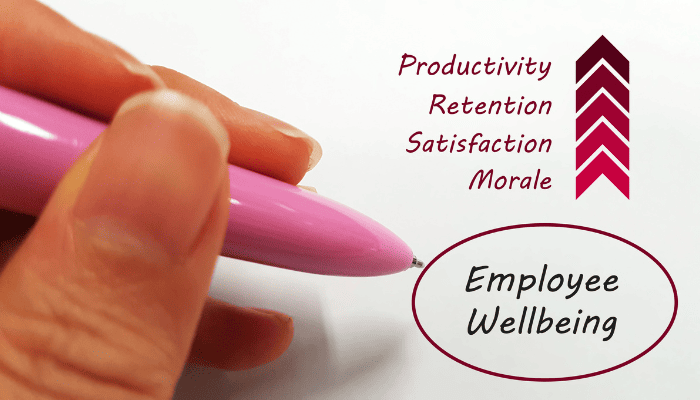




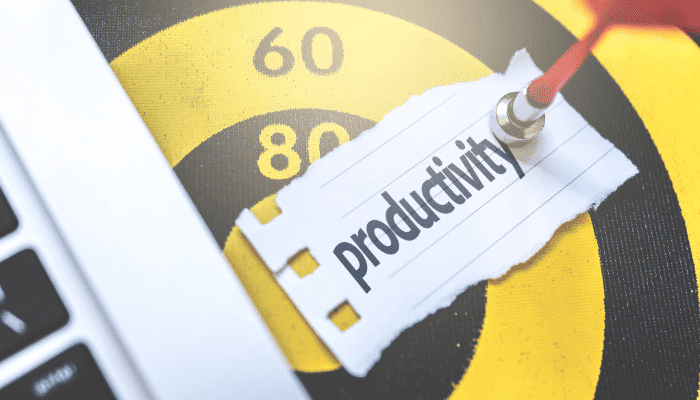

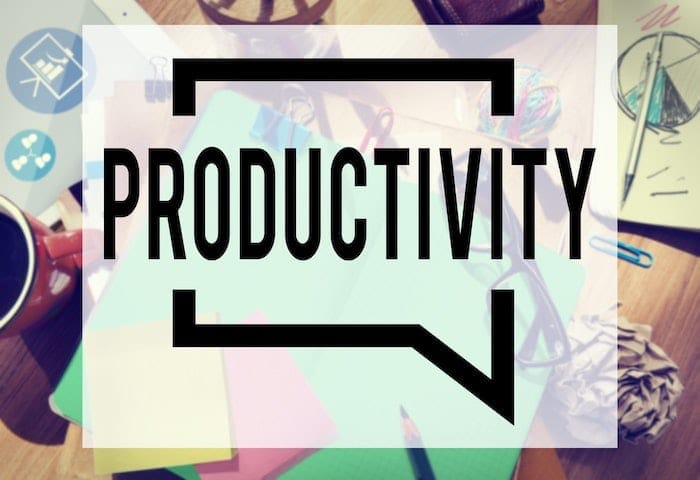
 Image Source:
Image Source: 

 OKRs are one of the best methods of measuring
OKRs are one of the best methods of measuring  Planned-to-done ratio measures the number of tasks delivered by team members against the planned activities.
Planned-to-done ratio measures the number of tasks delivered by team members against the planned activities. 

 Image Source: McKinsey.com
Image Source: McKinsey.com
